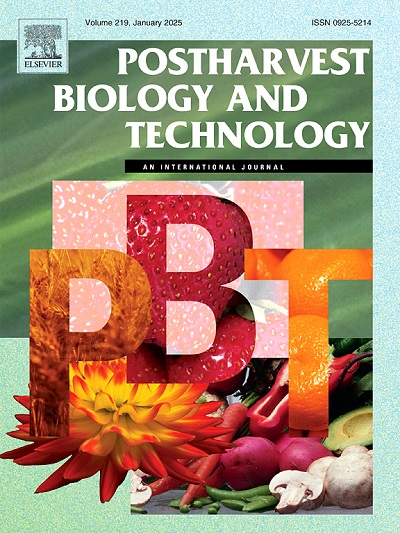Induction of fresh produce defense response: Mechanism, challenges, and future directions
IF 6.8
1区 农林科学
Q1 AGRONOMY
引用次数: 0
Abstract
Induced resistance is a relatively novel and effective approach for managing postharvest disease. Fresh fruit and vegetables are highly susceptible to biotic and abiotic stresses, such as fungal pathogens and suboptimal temperatures, which lead to substantial postharvest losses and reduced shelf life. Once detached, fruit and vegetables continue ripening and senescence, which weakens the tissues, making them vulnerable to pathogens. Physical, chemical, and biological treatments could trigger the innate immune response of fruit and vegetables, which could reduce postharvest loss. This review aims to elucidate the mechanisms underlying the induction of defense responses in fresh produce. Chemical, biological, or physical inducers activate the fresh produce defense pathways, synthesizing defense-related proteins and metabolites, thus stimulating the plant's natural defense against pathogens and environmental stresses. Those inducers often trigger signaling cascades involving phytohormones, reactive oxygen species (ROS), and signals, orchestrating a complex network of molecular defensive combat fields. While there is progress in the induced resistance field, future challenges remain. These challenges include acquiring more knowledge of the specific defense pathways in different agricultural produce and their potential impact on produce quality and tolerance. Moreover, the inducer should be effective, economical, and safe. Adapting advanced technologies, such as omics approaches and biotechnological tools, holds the potential for the precise modulation of defense responses, leading to the development of tailored strategies for different produce types and specific biotic and abiotic stress.
生鲜农产品防御反应的诱导:机制、挑战与未来方向
诱导抗性是一种较新的有效的采后病害防治方法。新鲜水果和蔬菜极易受到生物和非生物压力的影响,如真菌病原体和次优温度,这会导致大量采后损失和保质期缩短。一旦分离,水果和蔬菜就会继续成熟和衰老,这削弱了组织,使它们容易受到病原体的攻击。物理、化学和生物处理可以触发水果和蔬菜的先天免疫反应,从而减少采后损失。这篇综述旨在阐明在新鲜农产品中诱导防御反应的机制。化学、生物或物理诱导剂激活新鲜农产品的防御途径,合成与防御相关的蛋白质和代谢物,从而刺激植物对病原体和环境胁迫的天然防御。这些诱导剂通常触发包括植物激素、活性氧(ROS)和信号在内的信号级联反应,协调一个复杂的分子防御作战网络。虽然在诱导抗性领域取得了进展,但未来的挑战仍然存在。这些挑战包括获取更多关于不同农产品的特定防御途径及其对农产品质量和耐受性的潜在影响的知识。此外,诱导器应有效、经济、安全。采用先进的技术,如组学方法和生物技术工具,具有精确调节防御反应的潜力,从而导致针对不同产品类型和特定生物和非生物胁迫的量身定制策略的发展。
本文章由计算机程序翻译,如有差异,请以英文原文为准。
求助全文
约1分钟内获得全文
求助全文
来源期刊

Postharvest Biology and Technology
农林科学-农艺学
CiteScore
12.00
自引率
11.40%
发文量
309
审稿时长
38 days
期刊介绍:
The journal is devoted exclusively to the publication of original papers, review articles and frontiers articles on biological and technological postharvest research. This includes the areas of postharvest storage, treatments and underpinning mechanisms, quality evaluation, packaging, handling and distribution of fresh horticultural crops including fruit, vegetables, flowers and nuts, but excluding grains, seeds and forages.
Papers reporting novel insights from fundamental and interdisciplinary research will be particularly encouraged. These disciplines include systems biology, bioinformatics, entomology, plant physiology, plant pathology, (bio)chemistry, engineering, modelling, and technologies for nondestructive testing.
Manuscripts on fresh food crops that will be further processed after postharvest storage, or on food processes beyond refrigeration, packaging and minimal processing will not be considered.
 求助内容:
求助内容: 应助结果提醒方式:
应助结果提醒方式:


